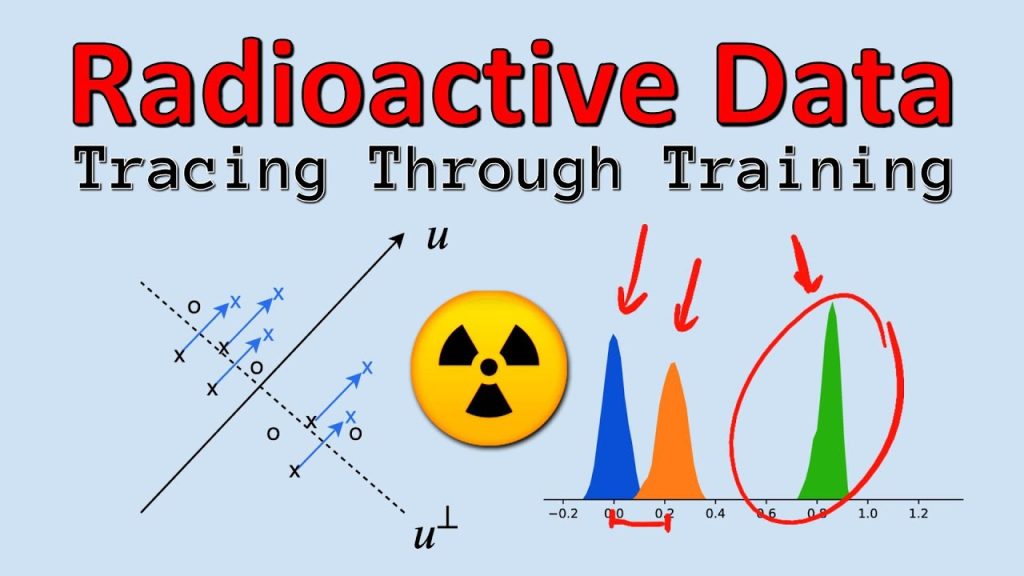#ai #research #privacy
Data is the modern gold. Neural classifiers can improve their performance by training on more data, but given a trained classifier, it’s difficult to tell what data it was trained on. This is especially relevant if you have proprietary or personal data and you want to make sure that other people don’t use it to train their models. This paper introduces a method to mark a dataset with a hidden “radioactive” tag, such that any resulting classifier will clearly exhibit this tag, which can be detected.
OUTLINE:
0:00 – Intro & Overview
2:50 – How Neural Classifiers Work
5:45 – Radioactive Marking via Adding Features
13:55 – Random Vectors in High-Dimensional Spaces
18:05 – Backpropagation of the Fake Features
21:00 – Re-Aligning Feature Spaces
25:00 – Experimental Results
28:55 – Black-Box Test
32:00 – Conclusion & My Thoughts
Paper:
Abstract:
We want to detect whether a particular image dataset has been used to train a model. We propose a new technique, emph{radioactive data}, that makes imperceptible changes to this dataset such that any model trained on it will bear an identifiable mark. The mark is robust to strong variations such as different architectures or optimization methods. Given a trained model, our technique detects the use of radioactive data and provides a level of confidence (p-value). Our experiments on large-scale benchmarks (Imagenet), using standard architectures (Resnet-18, VGG-16, Densenet-121) and training procedures, show that we can detect usage of radioactive data with high confidence (p < 10^-4) even when only 1% of the data used to trained our model is radioactive. Our method is robust to data augmentation and the stochasticity of deep network optimization. As a result, it offers a much higher signal-to-noise ratio than data poisoning and backdoor methods.
Authors: Alexandre Sablayrolles, Matthijs Douze, Cordelia Schmid, Hervé Jégou
Links:
YouTube:
Twitter:
Discord:
BitChute:
Minds:
Parler:
LinkedIn:
If you want to support me, the best thing to do is to share out the content 🙂
If you want to support me financially (completely optional and voluntary, but a lot of people have asked for this):
SubscribeStar:
Patreon:
Bitcoin (BTC): bc1q49lsw3q325tr58ygf8sudx2dqfguclvngvy2cq
Ethereum (ETH): 0x7ad3513E3B8f66799f507Aa7874b1B0eBC7F85e2
Litecoin (LTC): LQW2TRyKYetVC8WjFkhpPhtpbDM4Vw7r9m
Monero (XMR): 4ACL8AGrEo5hAir8A9CeVrW8pEauWvnp1WnSDZxW7tziCDLhZAGsgzhRQABDnFy8yuM9fWJDviJPHKRjV4FWt19CJZN9D4n
source

